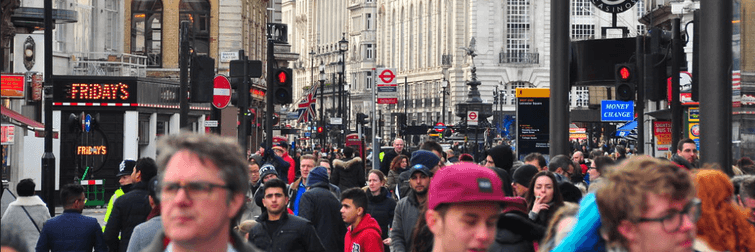
blog: Planning for change
Friday 29th November 2019
Vacant shops and empty streets are an all too familiar scene of many high streets. Understandably, this continued decline is concerning, but it also presents an opportunity for us to re-think how we use these spaces to reignite life into town centres.
The £675 million Future High Street Fund will support local areas to prepare long-term strategies for their town centres, fund new physical infrastructure and support the densification of residential and workspace units. These measures will help to stimulate change in the town centres, but this blog explores how we could go one step further and revisit planning policy to make it easier for businesses to diversify their offering to accelerate growth.
Causes of the decline
The high street was once the heart of every town centre, representing the heaviest footfall and providing the core retail offering, but has been crippled by an irreversible shift in how and where people spend their money. Some of the key drivers behind the demise of the high street are the rise of out-of-town retail parks, reduced parking availability, the loss of 'bricks-and-mortar' banks, and online shopping.
A significant growth in online shopping has had a fundamental impact on the way consumers shop, and this trend is only set to continue. The seamless accessibility of the internet means that retail webpages or apps are at our fingertips, leading to people spending more and more time online. Since 2006, online sales have been growing year on year, reaching 20% of total retail sales in December 2018 and 21.5% around Black Friday.
This phenomenon has led to a scenario where goods and services can be accessed instantly, offering superior choice than a high street store and delivery straight to your door. This, coupled with the rise of online service provision - such as estate agency, travel agency, takeaway food delivery, and banking - means the need for physical space is diminishing. We have seemingly reached a point whereby the notion of retail outlets returning to the high street is incomprehensible.
Reviving the high street
In order for town centres to abandon their retail roots and change the way in which they attract custom, they must be able to expand their offering to customers. I feel that a key element to this is to relax planning policy to enable the buildings to be used for different purposes.
Current planning conditions and strict guidelines seek to regulate each type of floor space, which drastically hinders how easy it is to change the use of a building. For example, a coffee shop may also want to be a barber shop and offer a gym or yoga studio upstairs, but for this to happen, multiple use classes would need to be satisfied rather just one.
Offering this flexibility to modify the use of buildings easily will allow town centres to reinvent themselves faster, igniting the change we need for our high streets.
In tandem with the evolving use of buildings, we need to re-think the surrounding public space, providing improved conditions for transport and movement to make things more accessible.
There are subtle signs that change is happening, with the emerging trend of gyms, cafés and yoga studios popping up in town centres.
These land uses show a shift in focus away from shopping, towards ventures that bring social value to town centres, creating destinations where people will want to spend time as well as money.
If you'd like to find out about the development planning projects we get involved with at ITP, click here or get in touch. If you'd like to join our team, check out our current vacancies.
